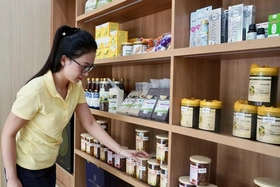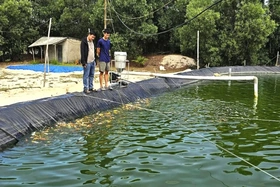a8ODw7Xhu43hu63huqbhu53DjMOM4buHw7JIxIPEguG7iuG6pnfDsmzhuqHhu4jhu53huqjhuqLhu43Eg8ONxILhu41Iw43EguG6qsONxILhu4rEgnp3w4zhu43DjOG7iMOM4buK4budxILhuqjhu53hu7HhuqZ34buN4bqgxILDjMODd8ONxIJ3w4zhu43EguG6qOG7r+G7iMOM4buKw43hu5Lhu43hu693w5V34bqm4bqqSOG6rHfhuqjhu4prL8ODw7Vsa0jhu43hu63huqbhu53DjMOM4buHw7JIKnfhu53hu6/Dsmzhu7B34bqod+G6oMSC4buKxILhuqjhuqLhu43huqDDjeG6quG6rOG7jXfhu5Dhu4p34bqow4zEgsOVd+G7jeG6oMSCw4zDg8SC4bqo4bqi4buN4bqiw43huqrhu4jhuqjhu6/DjMOs4buN4bqh4buI4bud4bqo4bqi4buNxIPDjcSC4buNw4Phu53DjOG7jUjDjcSC4bqqw43EguG7isSCenfhu6/hu43hu4rDg3fhu43hu53hu6/DleG7neG6qOG7rXfhuqx34bqo4buK4buN4bqq4bqg4buNxILhu4rDjOG7jeG6oMSCw4zDg3fDjcSCd8OM4buNxILhuqjhu6/hu4jDjOG7isON4buS4buNxILhuqjhu43hu53hu43hu63huqrhuqjhu4p34bqsSOG6qsON4budw43hu5Lhu43hu53huqjhu6/hu43DjOG7iMOM4buK4budxILhuqjhu53hu7HhuqZ34buN4bqs4bud4bqo4bqod8ON4buLay9IbGtI4buN4but4bqm4budw4zDjOG7h8OySOG7sOG6quG7r+G7ksOybGvEguG6rOG6ouG7jeG7reG6puG7ncOMw4zhu4fDssSC4busd+G6qOG7infDjcOy4buNw4zDjeG7reG7h8Oyw4Phu4rhu4pIw4xpLy/hu63hu4vhu7Hhu53huqpJ4buI4bud4bqo4bqi4buKw43EguG7i8OV4bqoL+G7r3fDjOG6pOG7iuG6qkgv4bqod8OUw4wvw7Thu5Hhu5PGoS/DtcO14buT4buvw7TDteG7m8O14buVw7Thu5fhu4rhu5Phu5Hhu4/hu5HhuqbGoS3Dg+G6qnfhu4/hu5nhu4vDlHfhu7FIw7Lhu43hu53huqbhu4rhu4fDsuG6oeG7iOG7neG6qOG6ouG7jcSDw43EguG7jUjDjcSC4bqqw43EguG7isSCenfDjOG7jcOM4buIw4zhu4rhu53EguG6qOG7neG7seG6pnfhu43huqDEgsOMw4N3w43EgnfDjOG7jcSC4bqo4buv4buIw4zhu4rDjeG7kuG7jeG7r3fDlXfhuqbhuqpI4bqsd+G6qOG7isOy4buNL2xrL0hsa0jhu43hu63huqbhu53DjMOM4buHw7JI4bus4budSOG7isSC4bqq4bqow7JsKeG6quG7reG7neG6puG7jeG7neG7iOG7isOD4bqqw43EguG7isSCd8OM4buNxILhuqjDjEh34but4buK4buN4buKw4N34buNw4134bqo4bqqw5Xhu53hu4rEguG6quG6qOG7jeG6quG6oOG7jeG6oMSCw4zDg8SC4bqo4bqi4buN4bux4bqq4bud4buKw4zhu43hu4jDjMSC4bqo4bqi4buNw6Dhuq/hu43huqzhu53hu4p3w43EguG7neG6psOM4buL4buNw6DDg+G6quG7iuG6qmnhu43Eg+G7i+G7rOG7iylrL0hsa0jhu43hu63huqbhu53DjMOM4buHw7JI4buw4bqq4buv4buSw7JsxIPDg3fhu43hu63huqrhuqjDjMSCw4zhu4p34bqo4buK4buNSMON4bqq4buv4buI4but4buKxILhuqrhuqjhu43huqrhuqDhu43DjHfhu53huqDhuqrhuqrhu6/hu43DjHfDjcOVd8OM4buN4budw4zhu43hu53hu43hu63DjeG7iOG7rcSC4bud4bqm4buNw4zhu4hISOG6puG7kuG7jeG6oOG6qsON4buNSMON4bqq4butd8OMw4zEguG6qOG6ouG7jeG6oOG7neG7rcSC4bqmxILhu4rEgnfDjOG7jeG7neG6qOG7r+G7jeG7neG7jeG6puG7iOG7rcON4bud4buKxILDlXfhu4134buQSOG6qsON4buK4buN4but4bqq4bqs4bqs4bqq4buvxILhu4rhu5Lhu4vhu43hu5zhu6/hu6/EguG7isSC4bqq4bqo4bud4bqm4bqm4buSw6zhu43hu4rDg8SCw4zhu43EguG6qMSC4buKxILhu53hu4rEgsOVd+G7jeG6onfhuqh3w43hu53hu4p3w4zhu4134bqsSOG6puG6quG7kuG6rHfhuqjhu4rhu43huqpISOG6qsON4buK4buI4bqoxILhu4rEgnfDjOG7jeG6oOG6qsON4buN4bqqw5V3w43hu43DteG7lcOs4buP4buP4buP4buNxILhuqjhu6/EgsOVxILhu6/hu4jhu53huqbDjOG7jeG7neG7rcON4bqqw4zDjOG7jcO14buV4buN4but4bqq4budw4zhu4rhu53huqbhu43hu63huqrhuqzhuqzhu4jhuqh3w4zhu43hu53huqjhu6/hu43hu4rhuqrDlOG6qMOM4buNw5TEguG7isODxILhuqjhu43hu4rDg3fhu41Iw43huqrDlcSC4bqo4butd+G7i2svSGxrSOG7jeG7reG6puG7ncOMw4zhu4fDskjhu7Dhuqrhu6/hu5LDsmzhu5zDjOG7jeG6quG6oOG7jXfhu53DjeG6puG7kuG7jcO04buPw7Thu5HDrOG7jeG7isODd+G7jUjDjeG6qsOVxILhuqjhu6134buN4bux4bqq4budw4zhu4rDjOG7jeG7neG7jeG7iuG6quG7iuG7neG6puG7jeG6quG6oOG7jcO0w6zDtcO0xqHhu43huqDEgsOMw4PEguG6qOG6ouG7jcOVd8OMw4x34bqmw4zhu43DlMSC4buKw4Phu43hu53hu43hu63huqrhuqzhu7HEguG6qHfhu6/hu43hu63hu51I4bud4butxILhu4rhu5Lhu43huqrhuqDhu43DteG7keG7l8Osw7Thu5XDteG7jeG7rGPhu4vhu43hu5zhuqzhuqrhuqjhuqLhu43hu4rDg3fhuqzDrOG7jeG7mcO04buV4buNw5V3w4zDjHfhuqbDjOG7jcOD4budw5V34buN4bud4buN4bqmd+G6qOG6ouG7isOD4buN4bqq4bqg4buN4buV4buN4bqsd+G7infDjcOM4buN4bqqw43hu43huqzhuqrDjXfDrOG7jcSC4bqo4but4bqm4buI4buvxILhuqjhuqLhu43DtOG7keG7jXfhu5Dhu613d+G7r8SC4bqo4bqi4buNw7Thu5Phu43huqx34buKd8ONw4zhu43hu53huqjhu6/hu43DteG7l8O14buNw43hu53huqjhuqLEguG6qOG6ouG7jeG6oMON4bqq4bqs4buNw7Xhu5nhu43hu4rhuqrhu43DtOG7k+G7jeG6rHfhu4p3w43DjOG7i+G7jSXEguG6quG7jSnEguG6qMOD4buN4buuxILDjOG7isONxILhu63hu4rhu43DjOG7iuG7neG6qOG7r8OM4buN4bqq4buI4buK4buN4budw4zhu43hu4rDg3fhu43huqbhuqrhu63hu53huqbEguG7iuG7kuG7jcOUxILhu4rDg+G7jeG7isODd+G7jeG6puG7ncON4bqid8OM4buK4buN4bqq4bqg4bqgw4zDg+G6qsONd+G7jeG6oMSCw4zDg8SC4bqo4bqi4buN4bqg4bqmd3fhu4rhu43EguG6qOG7jeG7isODd+G7jUjDjeG6qsOVxILhuqjhu6134buLay9IbGtI4buN4but4bqm4budw4zDjOG7h8OySOG7sOG6quG7r+G7ksOybOG7rnfDjEjEguG7infhu43hu4rDg8SCw4zDrOG7jeG7isODd8ONd+G7jcSCw4zhu43hu53hu43hu63hu4jDjcONd+G6qOG7iuG7jeG6puG7neG7reG6pOG7jeG6quG6oOG7jcOM4buS4bqo4butw4PDjeG6quG6qMSCenfhu6/hu43hu53huqjhu6/hu43hu6934buKd8ONxILhuqrDjeG7neG7isSC4bqo4bqi4buNxILhuqjhuqDDjeG7ncOM4buKw43hu4jhu63hu4rhu4jDjXfhu43EguG6qMOVd8OM4buK4bqsd+G6qOG7iuG7jeG6oOG6qsON4buNw4x34bud4bqg4bqq4bqq4buv4buNd+G7kEjhuqbhuqrEguG7iuG7neG7isSC4bqq4bqo4buL4buNJMSCw4zDg8SC4bqo4bqi4buN4bqm4bqq4bqixILDjOG7isSC4butw4zhu43DjHfDjcOVxILhu6134buNw5V3w4zDjHfhuqbDjOG7jcONd+G6rOG7ncSC4bqo4buN4buI4bqo4buvd8ON4buvd8OVd+G6puG6qkh34buvw6zhu43hu53huqjhu6/hu43EguG6qMOM4buI4bqg4bqgxILhu63Egnfhuqjhu4rhu43hu53hu4rhu4p34bqo4buKxILhuqrhuqjhu43huqDDjeG6quG6rOG7jeG6oMSCw4zDg3fDjeG6rHfhuqjhu43hu4rhuqrhu41Iw43huqrhu6/hu4jhu63hu4rhu41Iw413w4x3w43DleG7neG7isSC4bqq4bqo4buNw413w4zhu4jhuqbhu4rDjOG7jcSC4bqo4buN4bqm4bqqw4zDjHfDjMOs4buN4but4bqq4bqsSMON4bqq4bqsxILDjHfhu6/hu41J4buI4bud4bqmxILhu4rhu5LDrOG7jeG7r8SC4bqsxILhuqjEgsOMw4N34buv4buNSMON4bqq4buv4buI4but4buK4buNw5Xhu53huqbhu4h3w6zhu43DjXfhu6/hu4jhu6134buv4buNSMON4bqq4bqgxILhu4rDjMOs4buN4bud4bqo4buv4buNxILhuqjhu63DjXfhu53DjHfhu6/hu43hu63huqrDjOG7isOM4buN4buv4buId+G7jeG7iuG6quG7jeG7r3fhuqLDjeG7neG7r3fhu6/hu43DjOG7iuG6qsON4bud4bqid+G7jeG6oOG7neG7rcSC4bqmxILhu4rEgnfDjOG7jeG7neG6qOG7r+G7jcSC4bqo4bud4buvd0nhu4jhu53hu4p34buN4but4bqq4bqm4buv4buNSMONd8OMd8ONw5Xhu53hu4rEguG6quG6qOG7i2svSGxrSOG7jeG7reG6puG7ncOMw4zhu4fDskjhu7Dhuqrhu6/hu5LDsmzEg+G6quG7jeG7neG7r+G7r8ONd8OMw4zhu43hu4rDg3fDjHfhu43EgsOMw4zhu4h3w4zDrOG7jeG7isODd+G7jeG6oeG7iOG7neG6qOG6ouG7jcSDw43EguG7jeG7nOG6osONxILhu63hu4jhuqbhu4rhu4jDjeG7neG6puG7jVfhu5Dhu4p34bqow4zEguG6quG6qOG7jeG7rHfhuqjhu4p3w43DrOG7jcSC4bqo4buN4but4bqq4bqm4bqm4bud4bux4bqqw43hu53hu4rEguG6quG6qOG7jcOUxILhu4rDg+G7jeG7isODd+G7jcSDw4Phu4jhu53hu43Eg8ODxIJ34bqo4buNKuG7iHfhu43hu5zhuqLDjcSC4but4buI4bqm4buK4buIw43hu53huqbhu41X4buQ4buKd+G6qMOMxILhuqrhuqjhu43hu6x34bqo4buKd8ONw6zhu43EgsOM4buNxILhuqxI4bqmd+G6rHfhuqjhu4rEguG6qOG6ouG7jeG7isODd+G7jeKAnOG7nEhI4bqmxILhu63hu53hu4rEguG6quG6qOG7jeG6quG6oOG7jeG7rMOgJOG7jcSp4bus4bqq4bqsSOG6qsOMxILhu4p34buNw6Dhuqrhuqbhu5Lhu4jDjXfhu4rDg+G7neG6qHfhu40k4bqq4bud4bqsauG7jeG7infhu63Dg+G6qOG6quG6puG6quG6ouG7kuG7jcSC4bqo4buNSMONd8OMd8ONw5XEguG6qOG6ouG7jUjDjeG6quG7r+G7iOG7reG7isOM4buN4bqq4bqo4buN4bqq4bqg4bqgw4zDg+G6qsONd+G7jeG6oMSCw4zDg8SC4bqo4bqi4buNw5V3w4zDjHfhuqbDjOKAneG7jUjDjeG6qsOCd+G7reG7isOs4buNw5TEguG7isOD4buN4buKw4N34buNPuG7neG7isSC4bqq4bqo4bud4bqm4buN4buc4bqiw43EguG7reG7iOG6puG7iuG7iMON4bud4bqm4buNV+G7kOG7infhuqjDjMSC4bqq4bqo4buN4busd+G6qOG7infDjeKAmcOM4buNw4zhu4hISOG6qsON4buK4buL4buNxIPDg3fhu43EguG6qMSC4buKxILhu53hu4rEgsOVd+G7jcOU4budw4zhu43huqbhu53hu4jhuqjhu63Dg3fhu6/hu43EguG6qOG7jcO04buPw7TDteG7jeG7neG6qOG7r+G7jcO04buPw7TDtOG7jcSC4bqo4buN4bus4buI4bud4buNY8SCd+G7iuG7jcSD4bqqw5Thuqjhu43hu53huqjhu6/hu40lxILhuqrhu41jxIJ34buK4buN4bus4bqq4bqs4bqs4buI4bqod8Os4buNJcSC4bqq4buNKcSC4bqow4Phu43hu67EgsOM4buKw43EguG7reG7iuG7i2svSGxrSOG7jeG7reG6puG7ncOMw4zhu4fDskjhu7Dhuqrhu6/hu5LDsmwm4bqo4buNw7Thu4/DtOG7kcOs4buN4buKw4N34buN4bqh4buI4bud4bqo4bqi4buNxIPDjcSC4buN4buc4bqiw43EguG7reG7iOG6puG7iuG7iMON4bud4bqm4buNV+G7kOG7infhuqjDjMSC4bqq4bqo4buN4busd+G6qOG7infDjeG7jeG7reG6quG6qOG7isSC4bqo4buId8OM4buN4buKw4N34buNSMON4bqqw4J34but4buK4buNxILhuqjhu40lxILhuqrhu41jxIJ34buK4buN4bus4bqq4bqs4bqs4buI4bqod+G7i+G7jcSDw4PDjeG6quG7iOG6osOD4bqq4buI4buK4buN4buKw4N34buNxILhuqxI4bqmd+G6rHfhuqjhu4rhu53hu4rEguG6quG6qMOs4buN4buKw4N34buN4butd+G6qOG7infDjeG7jeG7reG6puG6qsOMd+G6puG7kuG7jeG7reG6quG6puG6puG7neG7seG6qsON4bud4buKd8OM4buNw5TEguG7isOD4buN4bqm4bqq4but4bud4bqm4buN4buvd0jhu53DjeG7iuG6rHfhuqjhu4rDjOG7jeG7neG6qOG7r+G7jeG7scON4bud4bqo4butw4N3w4zhu43hu4rhuqrhu43hu63huqrhuqjhu6/hu4jhu63hu4rhu43DjOG7iMONw5V34buSw4zhu43huqDhuqrDjeG7jcOMd+G6pnfhu63hu4rEguG6qOG6ouG7jUjhuqrEguG6qOG7isOM4buN4bud4bqo4buv4buNw4Phuqrhu4jDjHfDg+G6quG6puG7r8OM4buL4buNw6DDjcSC4bqqw43EguG7iuG7kuG7jcSCw4zhu43huqLEgsOVd+G6qOG7jeG7iuG6quG7jcOD4bqq4buIw4x3w4Phuqrhuqbhu6/DjOG7jcOUxILhu4rDg+G7jcOMSHfhu63EguG6oMSC4but4buN4bqod3fhu6/DjMOs4buNd+G7kEh3w43Egnfhuqjhu613w6zhu41Iw43huqrhu6/hu4jhu63hu4rEguG6quG6qOG7jeG6rOG7neG6qEjhuqrDlHfDjcOs4buN4bud4bqo4buv4buN4bqgxILDjMODxILhuqjhuqLhu43DlXfDjMOMd+G6psOM4buNd+G7kOG7rXd34buvxILhuqjhuqLhu43DteG7meG7jeG6rHfhu4p3w43DjOG7jcSC4bqo4buN4bqmd+G6qOG6ouG7isOD4buLay9IbGtI4buN4but4bqm4budw4zDjOG7h8OySOG7sOG6quG7r+G7ksOybMSDw4N3w4x34buNw5V3w4zDjHfhuqbDjOG7jeG6rOG7iMOM4buK4buN4bqsd3fhu4rhu43hu4rDg3fhu43DjOG7isSCSOG7iOG6puG7neG7infhu6/hu43hu4p34butw4PhuqjEguG7reG7neG6puG7jcONd0nhu4jEgsONd+G6rHfhuqjhu4rDjMOs4buNd+G7kEjDjXfDjMOM4buN4bud4buNw5TEguG6puG6psSC4bqo4bqi4bqod8OMw4zhu43hu4rhuqrhu43DjMOD4budw4134buNd+G7kEh3w43Egnfhuqjhu613w4zDrOG7jeG7reG6quG6rOG6rMSC4buK4buN4buK4bqq4buNw4134butxIJIw43huqrhu63hu53hu4rEguG6qOG6osOs4buN4bud4bqo4buv4buN4but4bqq4bqsSOG6puG7kuG7jcOUxILhu4rDg+G7jeG7isODd+G7jeG7rXfhuqjhu4p3w43igJnDjOG7jcOMd+G7iuG7jcONd0nhu4jEgsONd+G6rHfhuqjhu4rDjOG7i+G7jcSDw4PEgsOM4buN4but4bqq4bqqSHfDjeG7neG7isSC4bqq4bqo4buN4bqg4bud4butxILhuqbEguG7iuG7neG7infDjOG7jeG7neG7iOG7isOD4bqqw43EguG7isSCd8OM4buNxILhuqjhu43huqrDjeG6ouG7neG6qMSCesSC4bqo4bqi4buNxILhuqjDjEh34but4buKxILhuqrhuqjDjOG7jeG7neG6qOG7r+G7jcOM4buISHfDjcOVxILDjMSC4bqq4bqo4buN4bqq4bqg4buN4buKw4N34buN4bqs4bqq4buvd+G6puKAmcOM4buNxILhuqxI4bqmd+G6rHfhuqjhu4rhu53hu4rEguG6quG6qMOs4buN4bud4bqo4buv4buNxILhu4rhu43hu53huqbhuqbhuqrDlMOM4buNSHfhuqpI4bqmd+G7jeG7iuG6quG7jcOVxILDjMSC4buK4buN4bud4bqo4buv4buN4bqmd+G7ncON4bqo4buN4bqgw43huqrhuqzhu43hu4rDg3fhu43EguG6qMSC4buKxILhu53hu4rEgsOVd+G7i2svSGxrSOG7jeG7reG6puG7ncOMw4zhu4fDskjhu7Dhuqrhu6/hu5LDsmzEg8ON4buI4bqq4bqo4bqi4buNxIPDg+G7neG6qMOD4buN4buuxILhuqjDg+G7jcSC4bqo4buNxJHhu4jhu53huqjhu40+4bqi4bqq4but4buNY8SC4bqm4bqm4bud4bqid8Os4buNJcSC4bqq4buNY8SCd+G7iuG7jeG7rOG6quG6rOG6rOG7iOG6qHfDrOG7jSXEguG6quG7jSnEguG6qMOD4buN4buuxILDjOG7isONxILhu63hu4rDrOG7jcOD4budw4zhu43hu7F3d+G6qOG7jcOMd+G6pnfhu63hu4p34buv4buN4bux4buS4buN4buKw4N34buN4butd+G6qOG7infDjeG7jeG7ncOM4buN4buKw4N34buN4bqqw5Thuqh3w43hu43huqrhuqDhu43DjMODxIJI4buN4bqo4buI4bqs4buxd8ON4buN4bqhxIMt4bub4bub4buP4buPw7UtxIPDo+G7jeG7iuG6quG7jUjhu53DjeG7isSC4butxIJI4bud4buKd+G7jcSC4bqo4buNxILhuqxI4bqmd+G6rHfhuqjhu4rEguG6qOG6ouG7jeG7isODd+G7jeG6rOG6quG7r3fhuqbhu4vhu41kd3fhuqThuqbhu5LDrOG7jeG6quG6oOG6oMSC4butxILhu53huqbDjOG7jeG7ncONd+G7jeG7r8SCw4134but4buK4bqm4buS4buNxILhuqjDleG6quG6psOVd+G7r+G7jcSC4bqo4buN4buvxILDjXfhu63hu4rEguG6qOG6osOs4buNxILhuqjDjEh34but4buKxILhuqjhuqLDrOG7jeG7neG6qOG7r+G7jcOM4buISHfDjcOVxILDjMSC4bqo4bqi4buN4buKw4N34buNSMON4bqq4butd8OMw4zhu4vhu43Eg8ODd+G7jeG7rXfhuqjhu4p3w43hu43DjOG7iEhI4bqqw43hu4rDjOG7jeG7meG7j+G7heG7jeG6quG6oOG7jeG7isODd+G7jeG7iuG7iOG6qOG6qHfhuqbhu43hu63huqrhuqjDjOG7isON4buI4but4buKxILhuqrhuqjhu43huqzhu53hu4p3w43EguG7neG6puG7jeG7reG6qsOM4buKw4zDrOG7jcOUxILhu4rDg+G7jeG6oMSCw4zDg3fDjeG6rHfhuqjhu43hu63huqrhuqjhu4rDjcSC4bux4buI4buKxILhuqjhuqLhu43hu4rDg3fhu43DjXfhuqzhu53EguG6qMSC4bqo4bqi4buN4buZ4buP4buF4buLay9IbGtI4buN4but4bqm4budw4zDjOG7h8OySOG7sOG6quG7r+G7ksOybMSDw4N34buN4butd+G6qOG7infDjeG7jeG7reG6quG6qOG7r+G7iOG7reG7infhu6/hu43hu53hu43hu4rDjeG7ncSC4bqoxILhuqjhuqLhu43DjHfDjMOMxILhuqrhuqjhu43huqDhuqrDjeG7jcO04buP4buN4bqgxILDjMODd8ON4bqsd+G6qOG7jeG6quG6qOG7jeG7infhu63Dg+G6qMSCSeG7iHfDjOG7jeG6oOG6qsON4buNSMONd8OMd8ONw5XEguG6qOG6ouG7jUjDjeG6quG7r+G7iOG7reG7isOM4buN4buxd+G6oOG6qsONd+G7jeG7reG6quG6qMOM4buKw43hu4jhu63hu4rEguG6qOG6ouG7jcOM4buK4bqqw43hu53huqJ34buN4buK4buI4bqo4bqod+G6psOM4buN4buIw4zEguG6qOG6ouG7jeG7rMOgJOG7jeG7infhu63Dg+G6qOG6quG6puG6quG6ouG7kuG7i+G7jcSDw4PEgsOM4buN4budxILhuqx34buv4buN4buK4bqq4buN4bqg4bud4bqsxILhuqbEguG7ncONxIJ6d+G7jeG7isODd+G6rOG7jcOUxILhu4rDg+G7jeG7isODd+G7jXfhuqDhuqB34but4buKw4zhu43huqrhuqDhu43hu4jDjMSC4bqo4bqi4buN4bqs4bud4buKd8ONxILhu53huqbDjOG7jeG6psSC4bqkd+G7jcOg4bqv4buNxKnDoOG6quG6puG7kuG7iMONd+G7isOD4bud4bqod2rhu43hu53huqjhu6/hu43hu6zhuqrhuqxI4bqqw4zEguG7infhu43huqzhu53hu4p3w43EguG7neG6psOMw6zhu43Dg8SC4bqiw4PhuqbEguG6osOD4buKxILhuqjhuqLhu43hu4rDg3fhu43hu53hu6/DleG7neG6qOG7iuG7neG6onfDjOG7jeG6quG6oOG7jcOg4bqv4buN4buK4buI4bqo4bqod+G6psOM4buN4bud4bqo4buv4buNSMON4bqqw5XEguG7r8SC4bqo4bqi4buN4bqi4buIxILhu6/hu53huqjhu6134buN4bqq4bqo4buN4but4bqmd+G7neG6qMSC4bqo4bqi4buN4bqsd+G7isOD4bqq4buvw4zhu4trL0hsa0jhu43hu63huqbhu53DjMOM4buHw7JI4buw4bqq4buv4buSw7Js4busw43EguG7infDjcSC4bud4buN4bqg4bqqw43hu43huqzhu53hu4p3w43EguG7neG6psOM4buN4buIw4x34buv4buNxILhuqjhu43DjOG7iuG6qsON4bud4bqid+G7jeG7iuG7iOG6qOG6qHfhuqbDjOG7jeG6quG6qOG7jeG6oMSCw4zDg8SC4bqo4bqi4buNw5V3w4zDjHfhuqbDjOG7jcSC4bqo4but4bqm4buI4buvd+G7jeG6puG6qsOU4buN4buKw4N3w43huqzhu53huqbhu43hu63huqrhuqjhu6/hu4jhu63hu4rEgsOVxILhu4rhu5LDrOG7jeG6rMSC4bqoxILhuqzhu53huqbhu43DlOG7neG7infDjeG7jeG7neG7scOM4bqqw41I4buKxILhuqrhuqjhu43huqDhuqrDjeG7jeG7sXfhu4rhu4p3w43hu43DlOG7neG7infDjUjDjeG6quG6quG6oMSC4bqo4bqiw6zhu43huqbhuqrDlOG7jcOMSHfhu63EguG6oMSC4but4buN4bqiw43hu53DlcSC4buK4buSw6zhu43huqjhuqrhuqgt4bqg4bqm4bud4bqs4bqs4bud4buxxILhuqbEguG7iuG7ksOs4buN4bqsd+G7rcOD4bud4bqoxILhu63hu53huqbhu43hu6/hu4jDjeG7neG7scSC4bqmxILhu4rhu5Lhu43hu4rhuqrhu43DlMSC4buKw4PDjOG7iuG7neG6qOG7r+G7jcOVxILhu7HDjeG7neG7isSC4bqq4bqow4zhu43hu53huqjhu6/hu43DjMOD4bqq4but4bqkw4zDrOG7jeG7neG6qOG7r+G7jeG6ouG6quG6quG7r+G7jeG7reG6quG6rEjDjXfDjMOMxILhuqrhuqjhu4vhu43Eg8ODd8OMd+G7jeG6rOG7neG7infDjcSC4bud4bqmw4zhu43DjMOD4bqq4buI4bqm4buv4buN4bqo4bqq4buK4buNSOG6qsOMd+G7jcOD4budw43huqzhu43hu4rhuqrhu43hu4rDg3fhu43DjOG7iuG6qsONd+G7r+G7jUjDjeG6quG7r+G7iOG7reG7isOM4buL4buNKHfhu5Lhu41Iw413w4x3w43DleG7neG7isSC4bqq4bqo4buNw413SeG7iMSCw4134bqsd+G6qOG7isOM4buNxILhuqjhu63huqbhu4jhu6934buNw43hu51IxILhu6/hu43hu63huqrhuqrhuqbEguG6qOG6ouG7jeG7iEjhuqrhuqjhu43hu63hu53hu4rhu63Dg8Os4buN4bqs4budxILhuqjhu4rhu53EguG6qMSC4bqo4bqi4buN4bud4buN4but4bqq4bqm4buv4buNd+G6qMOVxILDjeG6quG6qOG6rHfhuqjhu4rDrOG7jeG7neG6qOG7r+G7jXfhuqjDjOG7iMONxILhuqjhuqLhu43DjOG7neG6qMSC4buK4budw43hu5Lhu43hu63huqrhuqjhu6/EguG7isSC4bqq4bqow4zhu43huqrhuqjhu43hu4rDg3fhu43hu6934but4bqkw6zhu41Iw43huqrhu613w4zDjMSC4bqo4bqi4buN4budw4134budw6zhu43hu53huqjhu6/hu43DjOG7iuG6qsON4bud4bqid+G7jeG7rXfhuqbhuqbhu53DjeG7i2svSGxrSOG7jeG7reG6puG7ncOMw4zhu4fDskjhu7Dhuqrhu6/hu5LDsmzhuq9I4bqq4bqo4buNSOG7iOG6puG6psSC4bqo4bqi4buN4buISOG7jeG7isODd+G7jeG6qHfhu4rDrOG7jeG6oMSCw4zDg3fDjeG6rHfhuqjhu43hu53DjXfhu43EguG6qMOM4buKw43hu4jhu63hu4p34buv4buN4buK4bqq4buNSMON4bqq4bqsSOG7iuG6puG7kuG7jcONd+G6rOG6qsOVd+G7jcSC4bqsSOG7iMONxILhu4rEgnfDjMOs4buN4buKw43hu53DjMODw6zhu43hu53huqjhu6/hu43DjOG7neG6qOG7r+G7i+G7jeG6o+G6quG7iuG7infhuqjDrOG7jeG7scON4buIxILDjHfhu6/DrOG7jeG7neG6qOG7r+G7jUjhuqrhuqrDjS1J4buI4bud4bqmxILhu4rhu5Lhu43huqDEgsOMw4Phu43hu53DjXfhu43DjOG7iuG6qsONd+G7r+G7jcOMd0jhu53DjeG7neG7infhuqbhu5LDrOG7jcOUw4PEguG6pnfhu43huqDDjXfDjMOD4buNw4x34bud4bqg4bqq4bqq4buv4buNxILhuqjhu4p34bqo4buvd+G7r+G7jeG6oOG6qsON4buN4but4bqq4bqow4zhu4jhuqxI4buKxILhuqrhuqjhu43EgsOM4buN4buKw4134bud4buKd+G7r+G7jeG7r8SC4bqg4bqgd8ONd+G6qOG7iuG6puG7kuG7i+G7jcSDw4N34buNw5Thu53DjMODxILhuqjhuqLhu41Iw43huqrhu613w4zDjOG7jcSC4bqow5XhuqrhuqbDlXfDjOG7jeG7iMOMxILhuqjhuqLhu43hu63huqZ34bud4bqo4buNw4x34bud4buNw5Thu53hu4p3w43hu43huqrDjeG7jcSC4butdy3hu63huqrhuqbhu6/hu43DlOG7neG7infDjeG7i2svSGxrSOG7jeG7reG6puG7ncOMw4zhu4fDskjhu7Dhuqrhu6/hu5LDsmwkxILDjMOD4buN4budw4134buN4but4bud4buKd+G6ouG6qsONxIJ6d+G7r+G7jeG6oOG6qsON4buNd+G7kEjhuqrDjeG7isOs4buN4bqgw413w4zDg+G7jeG7r+G6quG6rHfDjOG7isSC4but4buN4but4bqq4bqow4zhu4jhuqxI4buKxILhuqrhuqjDrOG7jeG6qsON4buN4bqg4bqqw43hu43huqDEgsOMw4Phu43DjOG7neG7iOG7rXfhu43huqrDjeG7jeG7neG6qMSC4bqs4bud4bqm4buN4bqgd3fhu6/hu4vhu41X4bqsSMOD4budw4zEgsOM4buNxILDjOG7jUjhuqbhu53hu6134buv4buN4bqq4bqo4buNd+G7kEjhuqrDjeG7infhu6/hu43hu53huqjhu6/hu43huqDDjXfDjMOD4buN4buv4bqq4bqsd8OM4buKxILhu63hu43hu63huqrhuqjDjOG7iOG6rEjhu4rEguG6quG6qOG7jeG6oMSCw4zDg+G7i+G7jeG7nOG6oOG7infDjeG7jcOM4bqqw43hu4rEguG6qOG6osOs4buN4buKw4N34buN4bqgxILDjMOD4buN4budw4134buNxILhuqzhuqx34buvxILhu53hu4p34bqm4buS4buNSOG6puG7neG7rXfhu6/hu43EguG6qOG7jeG7neG7jeG7seG7iOG7reG6pHfhu4rhu43huqrhuqDhu43hu63DjeG7iMOMw4N34buv4buNxILhu6134buN4bqsxILhu5B34buv4buNw5TEguG7isOD4buNw4x34bud4buNw5Thu53hu4p3w43hu43hu4rhuqrhu43DlOG7ncOMw4Phu43hu53huqjhu6/hu43DjXfhuqzhuqrDlXfhu43hu6/EgsON4buK4buNw5TDg8SC4bqmd+G7jeG7reG7neG7iMOMxILhuqjhuqLhu43hu4rDg3fhu43DjHfhu53huqDhuqrhuqrhu6/hu43hu4rhuqrhu43hu6/Egnfhu43EguG6rOG6rHfhu6/EguG7neG7infhuqbhu5Lhu4vhu43Eg8ODd+G7jeG7ncONw43hu53huqjhuqJ34buv4buNw4x34bud4bqg4bqq4bqq4buv4buNxILDjOG7jeG7isODd+G6qOG7jUjhuqbhu53hu6134buv4buNxILhuqjhu43hu4rDjeG7neG7ksOM4buN4bqqw43hu43DoFfhu43hu7Hhu53huqLDjMOs4buN4but4bqqw5V3w4134buv4buNw5TEguG7isOD4buNxILhu613w6zhu43hu53huqjhu6/hu43DjOG7iuG6qsONd+G7r+G7jcSC4bqo4buN4buKw4N34buN4butd+G6puG6puG7ncON4buLay9IbGtI4buN4but4bqm4budw4zDjOG7h8OySOG7sOG6quG7r+G7ksOybMSDw5TEguG7rXct4buv4budxILhuqbhu5Lhu43hu63Dg3fhu63huqTDjOG7jXfhuqjDjOG7iMONd+G7jeG7isOD4bud4buK4buNxILhuqDhu43hu4rDg3fhu43hu4rhuqpI4buN4bqm4bud4buSd8ON4buN4bqq4bqg4buNxILhu6134buN4bqsd+G6puG7isOM4buNw4zEguG6ouG6qMSC4bqgxILhu63hu53huqjhu4rhuqbhu5Lhu43hu53huqjhu6/hu43hu4rDg3fhu43huqDEgsOMw4Phu43hu7Hhuqbhuqrhu63huqTigJnDjOG7jeG7infhuqxId8ON4bud4buK4buIw4134buNd+G7kOG7rXd34buvw4zhu43hu5nCsOG7rMOs4buN4bud4buv4buvxILhu4rEguG6quG6qOG7neG6puG7jcSC4butd+G7jcSCw4zhu43hu53hu6/hu6934buv4buL4buNxIPDg3fhu43hu63huqrhuqbhu6/hu43hu6134bqm4bqm4budw43hu43hu6/huqrhuqrDjeG7jcSCw4zhu43huqpId+G6qHfhu6/hu43huqrhuqjhuqbhu5Lhu43DlMODd+G6qOG7jeG6qHfhu613w4zDjOG7ncON4buS4buL4buNw6DDjeG6qkh3w43DrOG7jUnhu4jEguG7reG6pMOs4buN4bud4bqo4buv4buN4but4budw4134bqg4buI4bqm4buNw4Phu53huqjhu6/huqbEguG6qOG6ouG7jeG7neG6qOG7r+G7jcOM4buK4bqqw43hu53huqJ34buN4bqq4bqg4buNSMON4bqq4buv4buI4but4buKw4zhu43hu53DjXfhu413w4zDjHfhuqjhu4rEguG7neG6puG7i+G7jcSDw4N34buNw4zhu4rhuqrDjeG7neG6onfhu43hu4rhu4jhuqjhuqh34bqm4buNw4zhu5LDjOG7infhuqzhu43EgsOM4buN4buKw4PhuqrDjeG6quG7iOG6osOD4bqm4buS4buN4but4bqmd+G7neG6qHfhu6/hu43hu7F34bqg4bqqw4134buNw4zhu4rhuqrDjcSC4bqo4bqi4buNSMON4bqq4buv4buI4but4buKw4zhu43hu53huqjhu6/hu43huqzhu4jDjOG7iuG7jeG7sXfhu43DjMOD4bud4buvd+G7r+G7jeG6oMON4bqq4bqs4buN4buKw4N34buNw4zhu4jhuqjhu43hu4rhuqrhu41Iw413w5V34bqo4buK4buNw4N34bud4buK4buN4bqi4budxILhuqjDrOG7jcOUw4PEguG7rcOD4buN4but4bqq4buI4bqm4buv4buN4buv4bud4bqs4bud4bqid+G7jeG7isODd+G7jUjDjXfDjHfDjcOVd+G7r+G7jUjDjeG6quG7r+G7iOG7reG7isOM4buLay9IbGtI4buN4but4bqm4budw4zDjOG7h8OySOG7sOG6quG7r+G7ksOybOG7rOG6quG6rEjhu53DjcSC4bqo4bqi4buN4buKw4N34buN4bqod8OU4buN4bqsd+G7isOD4bqq4buv4buN4buIw4zEguG6qOG6ouG7jcOg4bqv4buNw4zhu4rhuqrDjeG7neG6onfhu43hu4rhu4jhuqjhuqh34bqmw4zhu43DlMSC4buKw4Phu43hu4rDjeG7neG7r8SC4buKxILhuqrhuqjhu53huqbhu43DjOG7iuG6qsON4bud4bqid+G7jeG7iuG7iOG6qOG6qHfhuqbDjMOs4buN4buKw4N34buN4bqod8OU4buN4budSEjDjeG6quG7neG7rcOD4buNd+G6qMOM4buIw413w4zhu413w5V34bqo4buN4but4bqq4bqm4buv4buN4buvxILDjOG7isONxILhu7Hhu4jhu4rEguG6quG6qOG7jcOUxILhu4rDg+G6quG7iOG7iuG7jeG6puG6quG7reG7neG6puG7jcODd+G7neG7iuG7jcSC4bqo4butw4134budw4x3w4zhu4vhu43Eg8ODxILDjOG7jeG6ouG7iOG7ncON4bud4bqo4buKd3fDjOG7jeG7isODd+G7jUnhu4jhu53huqbEguG7iuG7kuG7jeG7neG6qOG7r+G7jUnhu4jhu53huqjhu4rEguG7iuG7kuG7jeG6quG6oOG7jeG6oMSCw4zDg+G7jeG7r+G7iMONxILhuqjhuqLhu43hu4rDg3fhu43hu4rEguG6rHfhu43hu53hu4rhu43DjHfhu53hu4vhu43Eg8ODd+G7jeG6qHfDlOG6puG7kuG7jeG7reG6quG6qMOM4buKw43hu4jhu63hu4p34buv4buNw4zhu4rhuqrDjeG7neG6onfhu43hu4rhu4jhuqjhuqh34bqm4buNxILDjOG7jeG7seG6quG7isOD4buN4but4bqmd+G7neG6qOG7jeG7neG6qOG7r+G7jXfhu53DjOG7kuG7jeG7iuG6quG7jeG7reG6pnfhu53huqjDrOG7jXfhuqjDjOG7iMONxILhuqjhuqLhu43hu4rDg+G7neG7iuG7jeG7isODd+G7jeG7reG7neG7iOG6osOD4buK4buNSMON4bqq4buv4buI4but4buKw4zhu43hu53DjXfhu43DjOG7neG6oHfhu43huqDhuqrDjeG7jeG7reG6quG6qMOM4buI4bqsSOG7isSC4bqq4bqo4buLay9IbGtI4buN4but4bqm4budw4zDjOG7h8OySOG7sOG6quG7r+G7ksOybCbhuqjhu43hu4rDg3fhu41Iw43hu53hu63hu4rEguG7reG7neG6puG7jeG7reG6quG6qOG7infhu5Dhu4rhu43huqrhuqDhu43huqDEgsOMw4N3w43huqx34bqo4oCZw4zhu43DjHfhu53hu43DguG6quG7iMON4bqod+G7ksOMw6zhu43hu4rDg3fhu43EguG6qOG7infhuqLDjeG7neG7isSC4bqq4bqo4buN4bqq4bqg4buN4bqod8OU4buNw4zhu4rhuqrDjeG7neG6onfhu43hu4rhu4jhuqjhuqh34bqmw4zhu43Dg+G7ncOM4buNd+G7kOG7infhuqjhu6934buv4buN4bqgxILDjMODxILhuqjhuqLhu43hu6/hu4jDjeG7neG7isSC4bqq4bqow4zhu43DlMODxILhuqZ34buNw4zEguG6ouG6qMSC4bqgxILhu63hu53huqjhu4rhuqbhu5Lhu43DjXfhu6/hu4jhu63EguG6qOG6ouG7jeG7isODd+G7jeG6qsOVd8ON4bud4bqm4bqm4buN4bqm4bqqw4zDjOG7jeG6quG6oOG7jeG7reG7neG7iuG7rcODw6zhu43hu4rDg3fDjXfhu7Hhu5Lhu43hu6/EguG6rMSC4bqoxILDjMODxILhuqjhuqLhu43hu4rDg3fhu43hu63huqrDjOG7isOM4buN4budw4zDjOG6quG7rcSC4bud4buKd+G7r+G7jcOUxILhu4rDg+G7jcOMd+G7neG7jeG7isONxIJIw4zhu4vhu40m4bqsSOG6qsON4buK4bud4bqo4buK4bqm4buSw6zhu43hu4rDg8SCw4zhu4134bqow4Phu53huqjhu6134bqsd+G6qOG7iuG7jcSC4bqo4buNw4zhu4rhuqrDjeG7neG6onfhu43hu4p34butw4PhuqjhuqrhuqbhuqrhuqLhu5Lhu4134bqow4zhu4jDjXfDjOG7jeG7isODd+G7jUnhu4jhu53huqbEguG7iuG7kuG7jeG6quG6oOG7jeG7isODd+G7jcOD4budw43DlXfDjOG7infhu6/hu43huqDEgsOMw4Phu4trL0hsa0jhu43hu63huqbhu53DjMOM4buHw7JI4buw4bqq4buv4buSw7JsJOG7iMON4buKw4N3w43huqzhuqrDjXfDrOG7jeG7isODd+G7jeG6qOG6qsOVd+G6puG7jeG6rOG7neG7infDjcSC4bud4bqm4buN4buIw4x34buv4buNxILhuqjhu43hu4rDg3fhu43DjOG7iuG6qsON4bud4bqid+G7jeG7seG7iOG6qOG6pHfDjcOM4buN4but4bqq4bqo4buKw43EguG7seG7iOG7infDjOG7jeG7iuG6quG7jeG7isODd+G7jcOVd8OMw4x34bqm4oCZw4zhu43DjcSC4bqixILhu6/EguG7iuG7ksOs4buNd+G6qOG7neG7seG6psSC4bqo4bqi4buNxILhu4rhu43hu4rhuqrhu43DlMSC4buKw4PDjOG7iuG7neG6qOG7r+G7jUjhuqrDlHfDjeG6oOG7iOG6puG7jcOU4budw5V34buNxILhuqxI4bud4but4buKw4zDrOG7jXfDjEh34butxILhu53huqbhuqbhu5Lhu43hu6/hu4jDjcSC4bqo4bqi4buNw4zhu4rhuqrDjeG6rOG7kuG7jcOMd+G7ncOM4bqq4bqow4zhu4vhu43Eg8ODxILDjOG7jeG7infhu63Dg+G6qOG6quG6puG6quG6osSC4but4bud4bqm4buN4bud4buvw5Xhu53huqjhu6134bqsd+G6qOG7iuG7jeG7neG6puG6puG6qsOUw4zhu43DjMODxIJI4buN4bqqw5Thuqh3w43DjOG7jeG7iuG6quG7jUjDjeG6quG6puG6quG6qOG6ouG7jeG7isODd8SCw43hu43hu4rEguG6rHfhu43hu53hu4rhu43DjHfhu53DrOG7jeG7r3fhu63DjXfhu53DjHfhu41Iw43huqrhu6/hu4jhu63hu4rhu4134buQ4buKw43hu53hu63hu4rEguG6quG6qOG7jXfhu5BId+G6qMOMd8OMw6zhu43hu53huqjhu6/hu43hu53hu63Dg8SCd8OVd+G7jcODxILhuqLDg3fDjeG7jXfhu63huqrhuqjhuqrhuqzEguG7reG7jXfhuqDhuqDEguG7rcSCd+G6qOG7reG7kuG7jeG7isOD4bud4bqo4buNSMONd8OVxILhuqrhu4jDjOG6puG7kuG7jUjhuqrDjMOMxILhu7HhuqZ34buL4buNxIPDg8SCw4zDrOG7jcSC4bqo4buN4buK4buIw43huqjDrOG7jeG6oOG6qsOM4buKd8ONw4zhu43hu4rDg3fhu43huqLDjeG6qsOU4buKw4Phu43huqrhuqDhu43huqrhuqDhuqDDjMOD4bqqw4134buN4bqgxILDjMODxILhuqjhuqLhu43hu53huqjhu6/hu4134bqow4Phu53huqjhu613w4zhu43DjOG7neG6oHfhu4rhu5Lhu43hu53hu4rhu43DjHfhu53hu4trL0hsa0jhu43hu63huqbhu53DjMOM4buHw7JI4buw4bqq4buv4buSw7Jsw6DDg+G7neG6qOG7jWPhu53huqjhu43DoMOD4buI4bqq4bqo4bqiw6zhu43hu4rDg3fhu43hu653SOG7iOG7iuG7kuG7jeG7rsSCw4134but4buK4bqqw43hu43huqrhuqDhu43hu4rDg3fhu43DoMON4bqqw5XEguG6qOG7rcSC4bud4bqm4buN4buc4bqiw43EguG7reG7iOG6puG7iuG7iMON4bud4bqm4buNV+G7kOG7infhuqjDjMSC4bqq4bqo4buN4busd+G6qOG7infDjcOs4buNd+G6rEjDg+G7ncOMxIJ6d+G7r+G7jeG7isOD4bud4buK4buN4buKw4N34buN4bqs4bqq4buvd+G6puKAmcOM4buNw413w4zhu4jhuqbhu4rDjOG7jeG7ncONd+G7jeG7sXfEguG6qOG6ouG7jcOUd+G6puG6pi3DjXfhu613xILDlXfhu6/DrOG7jUjhu53DjeG7isSC4but4buI4bqm4budw43huqbhu5Lhu43hu7Hhu5Lhu43huqDhu53DjeG6rHfDjcOM4buN4bud4bqo4buv4buN4buKw4PhuqrDjHfhu43EguG6qMOV4bqq4bqmw5V34buv4buNxILhuqjhu43huqrhuqDhuqDDjMOD4bqqw4134buN4bqgxILDjMODxILhuqjhuqLhu4vhu43Eg8ODd+G7jUjhuqrDjMSC4buKxILDlXfhu43EguG6rEjhu53hu63hu4rhu43huqrhuqDhu43hu4rDg3fhu43huqh3w5Thu43hu4p34butw4PhuqjhuqrhuqbhuqrhuqLhu5Lhu43huqrhuqjhu41Iw413w4x3w43DlcSC4bqo4bqi4buNSOG6qsOM4buKLcOD4budw43DlXfDjOG7iuG7jUjDjeG6quG7r+G7iOG7reG7isOM4buNw4Phu53DjOG7jeG6ouG7ncON4bqod8ONd+G7r+G7jcOMxILhuqLhuqjEguG6oMSC4but4bud4bqo4buK4buNxILhuqjhu4p3w413w4zhu4rhu43huqDDjeG6quG6rOG7jeG6quG6oOG6oMOMw4PhuqrDjXfhu43huqDEgsOMw4PEguG6qOG6ouG7jeG7seG6quG7neG7iuG7jeG6qkh3w43hu53hu4rhuqrDjcOM4buNd+G7neG6onfDjeG7jeG7iuG6quG7jeG6pnfhu53DjeG6qOG7jeG6oMON4bqq4bqs4buN4buKw4N34buNd+G7kEh3w43Egnfhuqjhu6134buLay9IbGtI4buN4but4bqm4budw4zDjOG7h8OySOG7sOG6quG7r+G7ksOybMSD4bqq4buNd+G6qMOD4bud4bqo4butd+G7jeG6oMSCw4zDg8SC4bqo4bqi4buNd+G6oOG6oMSC4butxIJ34bqo4but4buSw6zhu43hu4rDg3fDjXfhu43EgsOM4buN4bud4buN4bqod3fhu6/hu43huqDhuqrDjeG7jUjhuqrhuqbEguG7rcSCd8OM4buN4buKw4Phu53hu4rhu43huqDhu53hu63EguG6psSC4buK4bud4buKd+G7jeG6oMSCw4zDg3fDjeG6rHfhuqjigJnDjOG7jeG7neG7reG7rXfDjMOM4buN4buK4bqq4buN4but4budSMSC4buK4bud4bqm4buN4bqg4bqqw43hu43hu4hI4bqiw43hu53hu6/EguG6qOG6ouG7jeG7neG6qOG7r+G7jcONd+G6qOG6qsOV4bud4buKxILhuqjhuqLhu43DjOG7iuG6qsON4bud4bqid+G7jeG7iuG7neG6qOG6pMOM4buNw5TEguG7isOD4buN4buKw4N3w4x34buN4bqod8OU4buN4bqs4bud4buKd8ONxILhu53huqbDjOG7jeG6oOG6qsON4buNw4x3w43DlcSC4butd+G7jcOVd8OMw4x34bqmw4zhu43hu53huqjhu6/hu43huqrhuqDhuqDDjMOD4bqqw4134buN4bqgxILDjMODxILhuqjhuqLhu43DlXfDjMOMd+G6psOM4buL4buNxIPDg8SCw4zhu43DjOG7iEhI4bqqw43hu4rhu43DlOG6quG7iOG6puG7r+G7jeG7reG6quG6qOG7isONxILhu7Hhu4jhu4p34buN4buK4bqq4buNw4134buv4buI4butxILhuqjhuqLhu41Iw413w4x3w43DleG7neG7isSC4bqq4bqo4buN4but4bqqw4zhu4rDjOG7jeG7r+G7iMONxILhuqjhuqLhu43DjHfhu53hu43hu4rDjcSCSMOM4buN4bud4bqo4buv4buNxILhuqxIw43huqrDlcSC4bqo4bqi4buN4buKw4N34buN4bqqw5V3w43hu53huqbhuqbhu43huqbEgsOVd+G6psSCw4Phuqrhuqrhu6/DjOG7jeG6quG6oOG7jeG6oMSCw4zDg3fDjeG6rHfhuqjhu4trL0hsa0jhu43hu63huqbhu53DjMOM4buHw7JI4buw4bqq4buv4buSw7JsxIPDg3fhu43DjXfhu63huqrhuqzhuqx34bqo4buv4bud4buKxILhuqrhuqjhu43EgsOM4buN4bqg4bqqw43hu43hu53huqbhuqbhu43huqZ3w5V34bqmw4zhu43hu53huqjhu6/hu43DjHfhu63hu4rhuqrDjcOM4buN4buK4bqq4buN4bqg4bqq4but4buIw4zhu43huqrhuqjhu43DjOG7iEhI4bqqw43hu4rEguG6qOG6ouG7jeG7neG6qOG7r+G7jXfhu5BI4bud4bqo4buvxILhuqjhuqLhu43hu4rDg3fhu43huqzhuqrhu6934bqm4buN4bud4butw43huqrDjMOM4buN4buKw4N34buNSMON4bqqw5XEguG6qOG7rXfhu4vhu43hu5zhu6/hu6/EguG7isSC4bqq4bqo4bud4bqm4bqm4buSw6zhu43hu4rDg3fDjXfhu43EgsOM4buN4bud4bqo4buNd+G6rEjDg+G7ncOMxILDjOG7jeG6quG6qOG7jcOM4buKw4134bqo4bqi4buKw4N34bqoxILhuqjhuqLhu43hu4rDg3fhu43hu6/EgsOMw4x34bqsxILhuqjhu53hu4rEguG6quG6qOG7jeG6quG6oOG7jeG6qHfDlOG7jcOM4butxIJ34bqo4buKxILhuqDEguG7reG7jeG7neG6qOG7r+G7jeG7infhu63Dg+G6qMSC4but4bud4bqm4buN4bud4buvw5Xhu53huqjhu6134bqsd+G6qOG7isOM4buNxILhuqjhu41Iw43huqrhu6/hu4jhu63hu4rhu41Iw413w4x3w43DleG7neG7isSC4bqq4bqo4buN4bqsd+G7isOD4bqq4buvw4zDrOG7jeG7ncSC4bqsxILhuqjhuqLhu43hu4rhuqrhu43hu6/EguG6osSC4buK4bud4bqm4bqm4buS4buN4buKw43hu53huqjDjOG6oOG6qsON4bqs4buN4buKw4N34buN4bud4bqiw43EguG7reG7iOG6puG7iuG7iMON4bud4bqm4buNw4x34but4buK4bqqw43hu43hu53huqjhu6/hu413w4zhu4rhu53hu7HhuqbEgsOMw4Phu43DjOG6rOG7ncON4buK4buN4bud4bqiw43EguG7reG7iOG6puG7iuG7iMON4bud4bqm4buN4bqs4bqq4buvd+G6psOM4buLay9IbGtI4buN4but4bqm4budw4zDjOG7h8OySOG7nOG7iOG7isOD4bqqw43DsmzEg8ON4bud4bqo4buN4bus4bud4buK4buNKcSC4bqow4Phu40t4buNPuG6ouG6quG7reG7jTzhu53EgmsvSGw=
Tran Cat Linh - Ngoc Mai

{head}
Other news

QTO - In Quang Tri, clean agricultural stores may not flaunt flashy signs or wide storefronts, but they are quietly becoming trusted places where consumers...

QTO - In a quiet village in central Vietnam, Le Minh Duc, 26, has turned his passion for ornamental fish into a promising startup, the first Koi breeding...

